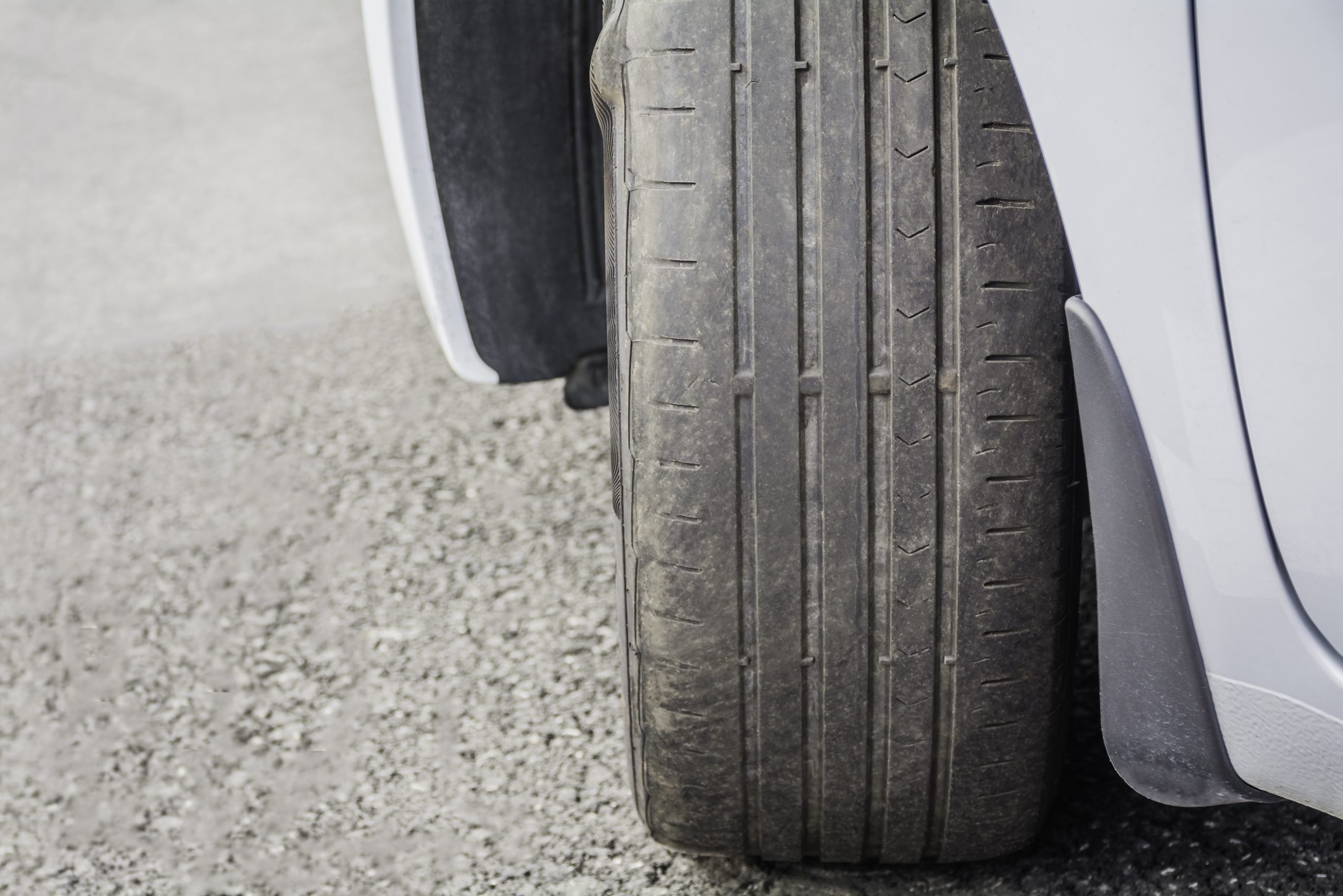Driving on unevenly worn tires is dangerous! Learn about the common (and preventable) causes.

What To Know About Uneven Tire Wear

Your tires, plus the brake and suspension systems that work in harmony with them, comprise your car’s most essential safety systems. Keeping a watchful eye on tire wear can help ensure your safety and that of your passengers.
The section of tire that touches the road is called the contact patch or footprint, and it’s designed to match the size and weight of your vehicle. Surprisingly, the contact patch isn’t much larger than the palm of your hand. When tires wear unevenly, it greatly reduces the tread contacting the road. That decreases steering control and increases stopping distances.
If you check tire wear as part of your regularly scheduled service or maintenance, look for an uneven wear pattern. If there is considerable wear, replacement may be the only option.
Here are five common tire wear patterns and what causes them.
On This Page
Center Wear
Over inflation causes down-the-center wear. It leads to a rough ride and less responsive braking and steering. Over inflated tires are also prone to impact damage.
Outer Edge Wear
Under inflation or low tire pressure causes rapid wear on both outer edges of a tire. Besides causing poor fuel economy, driving on under-inflated tires is dangerous. Tire sidewalls flex and overheat from low tire pressure, which can quickly lead to a blowout.
Excessive Inner or Outer Wear
Tires wearing on only the inner or outer edge is typically the sign of a wheel alignment problem. This usually occurs if the camber angles, i.e. the inward or outward tilt of the wheel when viewed from the front of the car, or toe-in/toe-out measurements, i.e. the angle/distance between the front of the tires on the same axle when viewed from above, are out of spec.
Note: Caster, the other major alignment angle, can cause your car to pull to one side and/or create steering issues if out of spec. It rarely causes abnormal tire wear.
Cupping
Cupping, AKA scalloping, results in patchy worn sections around the tire’s circumference. It’s usually caused by worn shock absorbers or struts, serious problems that need to be addressed ASAP. Have your suspension checked and any worn parts replaced before getting a wheel alignment. And have your tires rotated and balanced to help even out tire wear. Learn the difference between tire alignment and balance.
Feathering
In all likelihood, feather-edged tires will be noisy before you notice any wear. Look for angled or sharply diagonal tread on one side of the tire when running your hand across it.
Thankfully, feathering is almost always due to an out of spec wheel alignment, an easy remedy. Feathering can also be the result of taking corners at high speeds. Consider replacing your tires if feathering has caused excessive wear.
Additional Causes of Uneven Tire Wear
Worn, damaged or bent suspension system linkage and components can certainly cause excessive or abnormal inner and outer tire wear, as well as feathering and cupping.
Often overlooked causes include over-torqued lug nuts, rust build-up between disk brake rotors and wheel hubs, bent/damaged wheels or worn wheel/hub bearings. Ask your mechanic to carefully examine all these crucial mechanisms as part of a pre-alignment check.
Flat spots in the middle of a tire are probably due to brake problems. Constantly slamming the brakes, as well as hydraulic or mechanical issues, can cause brake lock-up and abnormal tire wear whether your vehicle has standard or anti-lock brakes. Flat spots require professional attention.
How To Prevent Uneven Tire Wear
- Avoid potholes and bouncing off curbs.
- Get your vehicle’s wheel alignment checked at least once a year, especially after a rough winter.
- Avoid aggressive driving and braking.
- Rotate your tires every six months or 6,000 to 8,000 miles. This also helps tires run quieter and last longer.
- Have tires rebalanced if you notice vibrations or shaking at medium to highway speeds.
- Follow your vehicle manufacturer’s recommended specifications and make checking your tire pressure part of your monthly maintenance routine. Properly inflated tires are safer and last longer. Pick up a tire tread depth gauge, tire air pressure gauge and tire inflator and use them regularly. Replace any tire with tread measuring 4/32-in. or less.




















